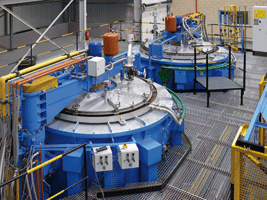The biopharmaceutical industry has moved toward single-use systems (SUS), which has caused an uptick in single-use sensors. Here are some reasons why those options can help biopharmaceutical companies meet goals and remain adaptable.
Facilitating Growth
The biopharmaceutical industry is tightly regulated. Single-use sensors let manufacturers verify the implementation of new processes or the creation of products happens as expected. Shifting to SUS makes companies better able to respond to changing needs.
In 2021, some customers had to wait up to a year to receive the single-use equipment they ordered. People familiar with the matter said the COVID-19 pandemic was primarily to blame. That is understandable — particularly because the novel health threat required researchers to develop vaccines and treatments rapidly.
Investing in SUS opportunities allowed decision-makers to capitalize on growth by meeting new needs. Similarly, sensors people only use for one manufacturing campaign before discarding supported that need by shortening the time to set up new production lines.
Eliminating Sterilization Steps
The products used in SUS are typically made of plastic that receives gamma-ray irradiation before getting sealed in packaging. In contrast, people using stainless-steel equipment and sensors designed for multiple uses must undergo specific sterilization steps after each use.
However, this approach is extremely time-consuming and prone to human error. Even characteristically conscientious people can make mistakes due to fatigue, carelessness or an inappropriately heavy workload. Failing to follow all the right sterilization processes could cause costly and dangerous contamination, significantly slowing the workload.
Single-use sensors simplify and speed the setup of new processes, helping biopharmaceutical companies maximize output. Decision-makers can also feel more confident knowing the products came from the manufacturer ready to use.
Lowering the Carbon Footprint
Purchasing products that are only used once may seem counterintuitive for lowering the carbon footprint of biopharmaceutical manufacturing. However, research indicated SUS could be more environmentally friendly in some circumstances.
That is most often true in areas facing water scarcity that rely on fossil fuels. However, the researchers cautioned that evaluating the situation for its overall environmental friendliness or lack thereof is always essential.
If a company always purchases its single-use sensors from distant countries, there is probably a substantial carbon footprint associated with product transit and delivery. However, it is different if the business can use locally manufactured sensors or those delivered from a much closer location.
Supporting the Bottom Line
Research suggests biopharmaceutical companies spend an average of $78 million on process development costs. Fortunately, single-use sensors make perfecting a process easier without so much setup time between each new effort.
Plus, SUS give decision-makers a cost-effective alternative to traditional stainless-steel equipment. Single-use products promote high quality while speeding turnaround times, protecting the company’s profits.
Prioritizing single-use systems can also make sense when a decision-maker only has limited space in a new or existing facility. The conventional stainless-steel options are often bulky and require lots of room. However, the additional flexibility of single-use products can help leaders do more with their spaces, which also helps the endeavors remain cost-effective.
Enabling Continual Visibility
Single-use sensors are essential for providing the details that show if processes are progressing as expected. The sooner plant workers learn of something amiss, the faster they can act to correct it.
A Grandview Research report expects single-use sensors in bioprocessing to show a 13.9% compound annual growth rate from 2021 to 2028. That coverage also valued the market at $1.9 billion in 2020. One key takeaway was the rising demand for biopharmaceutical products causes similar growth for sensors used once.
The report continued by mentioning how pH sensors and relevant advancements will drive the anticipated growth. For example, a single-use pH sensor with built-in temperature-reading capabilities provides improved oversight over precise processes.
Removing Maintenance Requirements
The components of stainless steel systems gradually wear out with use, resulting in costs associated with repairs and maintenance. Relatedly, failure to promptly address a failing part could lead to inaccurate measurements and other undesirable outcomes.
However, sensors designed for single uses do not have such maintenance needs. That fact can make them more affordable in the long run — especially once people find their preferred brands.
Since there is no need to create a maintenance budget for these sensors, people also do not need to worry about the time it could take to find an appropriate technician or to order spare parts. Delays associated with both those needs could significantly lengthen production timelines.
Will You Choose Single-Use Sensors?
The benefits above are some of the many outcomes of transitioning to single-use sensors. People should always consider aspects such as their budgets, plans and current factory setups before making the switch. It is also wise to speak to potential suppliers about things such as bulk pricing discounts and lead times. Those details will help the relevant individuals determine if now is the right time to change their equipment.
Moreover, the shift to single-use options may happen gradually, with people waiting to see the payoff of those decisions first. Once individuals with authority realize this possibility makes sense for their company’s needs, they will be more likely to embrace it for the long term.



























